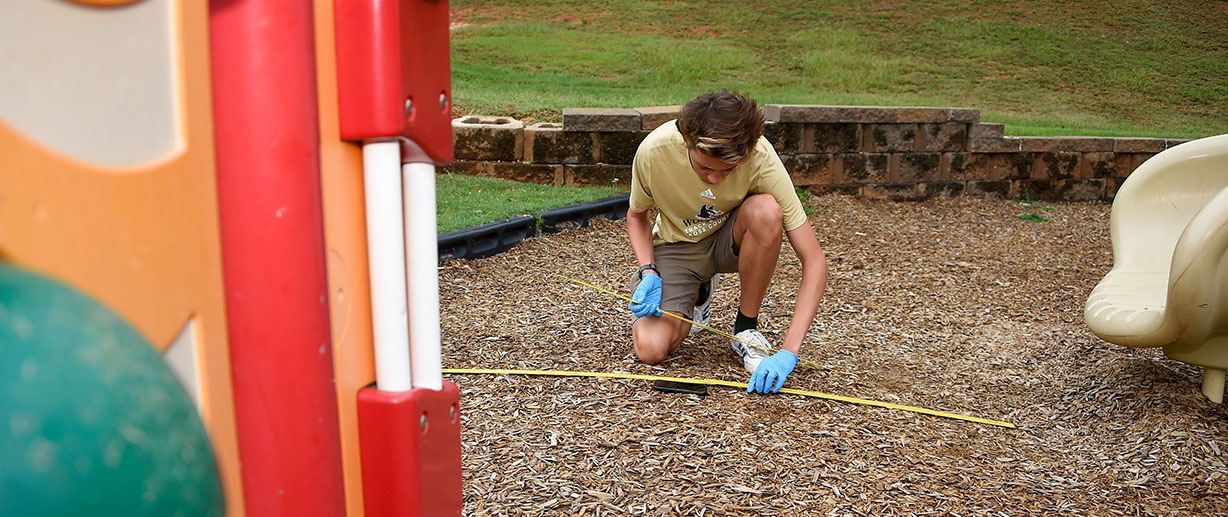By Robert W. Dalton
A group of Wofford students spent the summer looking for something they hoped they wouldn’t find. They got their wish, and that’s good news for Spartanburg children who frequent the playgrounds at 18 parks in the city.
Led by Dr. Grace Schwartz, assistant professor of chemistry, the group worked to assess lead concentrations in soil in Spartanburg city parks. Chronic exposure to lead in soil can cause a variety of health and developmental issues in children.
“This is the first time I worked on a project and hoped I wouldn’t find anything,” says Megan Santos ’23, a biology and studio art major from Concord, North Carolina. “Some parks had higher content, but the concentration was not high enough to be of concern based on EPA (Environmental Protection Agency) standards.”
The project is a follow-up to a 2021 study by another Wofford team that looked at the quantity and quality of parks in Spartanburg County. The team wanted to measure levels of lead because it’s a common urban pollutant that was formerly used in gasoline and paint, and also is an industrial pollutant.
Students collected five samples from four areas inside each playground and the same number from the surrounding area.
“The composite sample gives us a good idea of the area and the lead concentration,” says Carson Archie ’24, an environmental studies major with a data science concentration from Charleston, South Carolina. “On our maps, you can see where the levels are higher inside or outside of the playground, and what would be areas of concern at individual parks.”
After being collected, the soil samples had to be thoroughly dried and extracted in concentrated acid before the lead content could be measured. The process took at least eight hours.
“It was a waiting game to put the samples through the process,” says Kleo Young ’25, a chemistry major from Jonesville, South Carolina. “My goal was to get more experience in the lab, so going through the steps was satisfying.”
According to EPA guidelines, lead content in residential soil should be below 400 parts per million (ppm). Willow Oaks Park had the highest lead content inside the playground at 18 ppm. Duncan and Priscilla Rumley parks had the lowest at 1 ppm.
South Converse Park had the highest level in the area outside the playground at 106 ppm. Priscilla Rumley Park was again the lowest at 1 ppm.
The team is preparing to share its findings with the city. Schwartz also is planning for the next phase.
“We saw a lot of variability in concentrations between parks, and our future work will explore whether there are any correlations between lead concentration and different demographic factors,” she says. “We’ll also be looking for patterns between lead concentrations and factors like distance to the nearest road, distance to the nearest house, age of the neighborhood and distance to the nearest brownfield or Superfund site.”
